Thank you for reading Between the Layers! Please enjoy and share this free post with your friends. CHOCOLATE CAKE DIDN’T TAKE ME to Alabama, but chocolate cake was what I thought about all the way home. After a book signing in Montgomery last week, I drove west to Marion through historic Selma, the once-bustling manufacturing hub nestled on the high chalk banks of the Alabama River, the setting of an 1865 battle in the late days of the Civil War, and a century later, where civil rights marchers crossed its Edmund Pettus Bridge en route to Montgomery. Then I drove north through pine-thick forests where the soil turns from poor red clay into the rich dark dirt of the Black Belt. And while today ‘’Black Belt’’ is a term for a place with a majority Black population, in the 1820s and 30s, it was all about the dark fertile soil that grew cotton and made its landowners rich. The directions from Chef Scott Peacock to a house called Reverie in the town of Marion were simple enough. Locate the square. Turn left before the courthouse. On the right will be a white columned home. Pull through the gate to the back. Don’t block the driveway. Follow the path to the front door, which will open at 10. What he didn’t say was this five-bedroom 1858 Greek Revival home with four stout Doric columns and a widow’s walk on top has a boxwood knot garden, a grape arbor, a smoke house, hot pink camellias in bloom around its perimeter, and an orange tabby cat with a triumphant purr. When Reverie was built in the mid-19th Century, Marion was like other Deep South places situated near rail lines with an ample supply of enslaved help to work the cotton fields and fry the chicken. The money from cotton brought banks, architects, churches, and schools and later, segregation, violence, and the civil rights movement. Jean Childs Young (wife of Atlanta mayor and UN ambassador Andrew Young) and Coretta Scott King were both born here. Coretta Scott graduated as valedictorian from Lincoln Normal School in 1945. She married the Rev. Martin Luther King, Jr. on the front lawn of her mother's Marion home in 1953. For going on six years, Scott Peacock has been teaching people how to bake biscuits in Reverie’s kitchen. I met Scott when he was chef at the Georgia governor’s mansion in the mid-1980s. And then he found fame for his refined style of Southern cooking at Watershed restaurant in Decatur, outside Atlanta, and he would win the James Beard Award for Best Chef: Southeast in 2007. Scott became close friends with the Virginia chef and author Edna Lewis, and together they would write The Gift of Southern Cooking, published in 2003. After Miss Lewis died three years later, Scott reconnected with his Alabama roots. He had been born and raised in Hartford, south of Marion and Selma in what’s known as the Wiregrass region situated near the Florida border. His maternal great-grandmother Stewart ran a tea room there. Scott traveled to Marion to connect with the 107-year-old Eloise Hause, who had known his great-grandmother, and he hoped she might remember the tea room, which she did not. He spoke also with Ollie Glass, a 100-year-old Black woman in Hartford, who had cooked the foods of this region all her life. He interviewed the local writer Mary Ward Brown, then 92, and was enriched by her stories of old Alabama food. Charmed by this history and Marion’s slower pace, Scott bought an 1835-era home that needed love. He connected with Hunter Lewis, a Charlottesville investor and philanthropist who had restored Reverie and was eager for others to appreciate its beauty. In 2019, Scott posted a picture of biscuits on Instagram with the announcement that he was inviting small groups into Reverie’s kitchen to spend four to five hours making biscuits. Word spread like an Alabama pine fire. When I showed up at Scott’s doorstep, I was the 1,744th person wanting to learn how the perfect alchemy of heirloom flour, high oven heat, homemade baking powder, cold French butter, and whole buttermilk made mighty fine biscuits. This was MLK’s birthday and inauguration day, and I couldn’t think of a better place to soak in the ironies of this moment than to be in Reverie’s warm kitchen. My fellow Biscuiteers drove in from nearby Tuscaloosa and Huntsville, as well as Greensboro, North Carolina. We roamed the house like school kids on a sleepover, traipsing up and down its suspended staircase, gazing at period antiques, and searching for a window pane where a bride etched her name with her diamond engagement ring. John Kessler once wrote in Garden & Gun that visiting Scott’s kitchen isn’t just about biscuits but more like ‘’a moment of Alabama Zen.’’ For the first hour and a half we sat in the parlor listening to the now silver-haired but still cherub-faced chef talk about soil, cotton, and the town’s legacy of slavery. He spoke about how this grand place was once built as a spec home by cotton planters, and I couldn’t shake the feeling that this ‘’experience’’ for us was also a healing session for Scott. His Grandmother Peacock had made her simple biscuits with Snowdrift shortening, less expensive than Crisco, Scott says. To him, her biscuits were never good enough. They tasted of ‘’nothing but hardship and difficulty.’’ Even as a boy he noticed poor people’s biscuits like hers didn’t have layers like those fancy store-bought Pillsbury biscuits. But there’s a democracy to biscuits, he says, pricking the dough with a coin silver fork gifted from a Biscuiteer. Biscuits might be made from staple ingredients, and they might be baked in a humble kitchen or an antebellum mansion, but ‘’the hand is the magic.’’ ‘’No one can duplicate our hands.’’ Scott reaches his hand into the fridge for Ball quart-size jars of premeasured heirloom flour. It’s a mix of White Lammas and Red May, custom-ordered from Anson Mills in South Carolina. Then, he sifts what he calls ‘’morally superior’’ baking powder—two parts cream of tartar to one part baking soda—onto parchment paper three times. He adds four teaspoons to the flour and sifts them together while he’s talking, and then opens the fridge again for the Plugra unsalted butter, which he has just driven to Selma for, and dumps it into the bowl in one block. With strong hands that have danced this dance thousands of times before, he flattens the butter into the flour ‘’like camellia petals.’’ He pours in whole buttermilk and stirs the buttermilk into the dough with a wooden spoon then ‘’gathers and guides’’ it into a loose ball with his hands and turns it out onto a slab of white Alabama marble set on an old pine table. The oven has been set to 501 degrees convection, which is 526 degrees on a conventional oven if your oven will even go that high. Scott cuts the biscuits into 2 1/2-inch rounds but leaves the scraps to bake alongside. These are aptly called ‘’the leavings.’’ The pan goes into the oven, and once we smell the biscuits baking, the reaction of the wheat and buttermilk he assures us, he opens the door and turns the pan halfway. When they are deeply browned, he pulls them out and hands us a hot leaving to nibble on. We inhale it. And then carefully, when cool enough to handle, he cuts the biscuits in half with a fork and butters them generously with salted Plugra. ‘’No biscuit is the same. I’ll never produce this again,’’ he says wistfully. He fills some biscuits with ‘’sugared raspberries,’’ a loose homemade jam, and others with seared slices of Virginia country ham. It is quite an experience and why people travel from all fifty U.S. states, Mexico, Australia, and even Japan to be here. A Biscuiteer to my right says the biscuits are the best he’s ever had, and another to the left says these are the biscuits of her childhood. The really good chocolate cakeI ask Scott about his other ‘’experiences.’’ He’s dabbled in a chicken and dumplings experience, tried a fried chicken experience but that was too much like running a restaurant, and I suggested a Very Good Chocolate Cake experience. He paused as if contemplating it. Outside of biscuits, Scott is also known for a recipe called Very Good Chocolate Cake, so named by his friend and collaborator Edna Lewis. It calls for cake flour, brewed coffee, two eggs, and unsweetened chocolate. I had everything in house for that cake when I arrived home from Alabama. Scott had mentioned how his family bucked the norm and baked their layer cakes in square pans. So did my family. My mother and grandmother baked square cakes, and my mother’s set of three 8-inch heavily used square cake pans is among my most treasured culinary possessions. They never go into the dishwasher. Looking at his cake recipe in The Gift of Southern Cooking, and seeing it has just 1 1/2 cups flour, in spite of his calling for two 9-inch round pans, I opted for two 8-inch squares. I knew it was an old recipe because it is leavened with baking soda. So I didn’t even pull out the mixer and instead stirred it together with a wooden spoon. I baked that cake and while I was tempted to frost it my way, I resisted and made Scott’s frosting. His frosting is a bit more modern in the sense it’s more of a French ganache than a grandmother’s buttercream. I used only half of his frosting recipe, which was plenty. When Scott Peacock talks about chocolate cake, biscuits, or how tea leaves fall like rain in a pot of brewing tea, his words are poetic reminders that we can find beauty in turmoil and in places where others dare not go. In spite of the legacy of slavery and racial divisions that have complicated the history of this region, the South is a remarkable place with a font of recipes you’ll want to try. The only change I would make to his cake is to call it excellent. - xo, Anne Some notes…
THE RECIPE: Very Good Chocolate CakeThis cake stores well at cool room temperature for up to a week. I froze half of the cake for a dinner party next month. It is rich and moist and the perfect birthday cake for the chocolate lover. You can absolutely frost it with cream cheese frosting or a vanilla or coffee buttercream. But the first time you bake it, make it just like the recipe printed here today. It is very good. I reduced the sugar in the frosting from the original, and I cut the recipe in half. If you want extra frosting, double the recipe I provide. This is adapted slightly from The Gift of Southern Cooking, by Edna Lewis and Scott Peacock. Makes one 8-inch cake, serves 12 to 16 The Cake:
You’re on the free list for Anne Byrn: Between the Layers. If you’re liking what you’re reading, why don’t you become a paying subscriber for more recipes, stories, and content. |







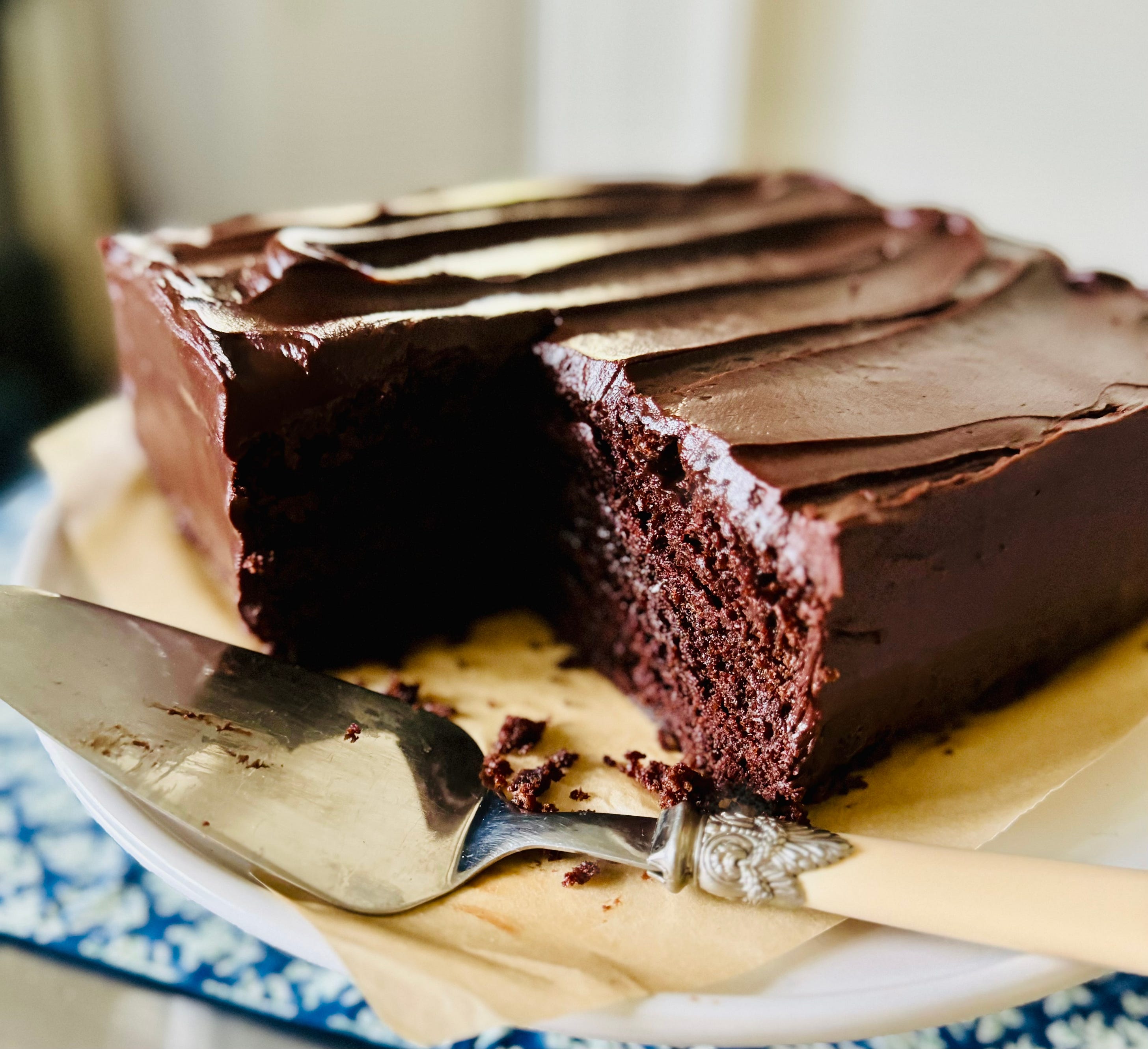
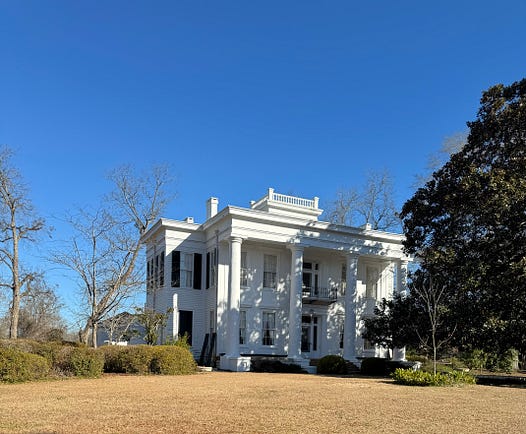
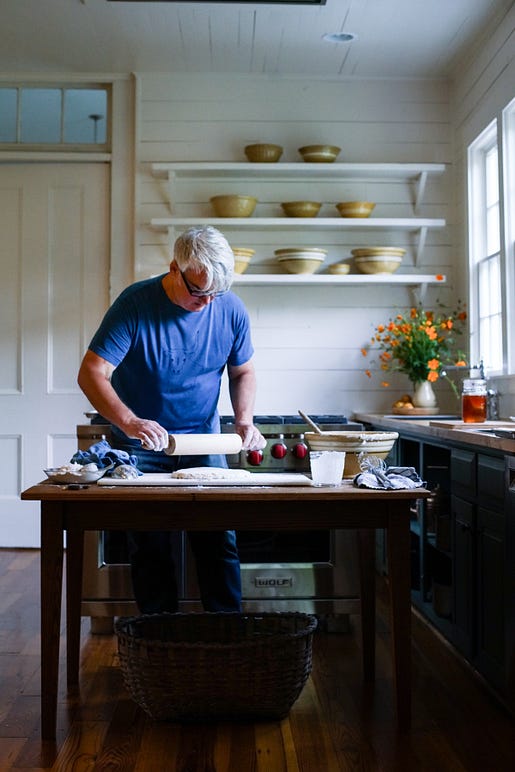
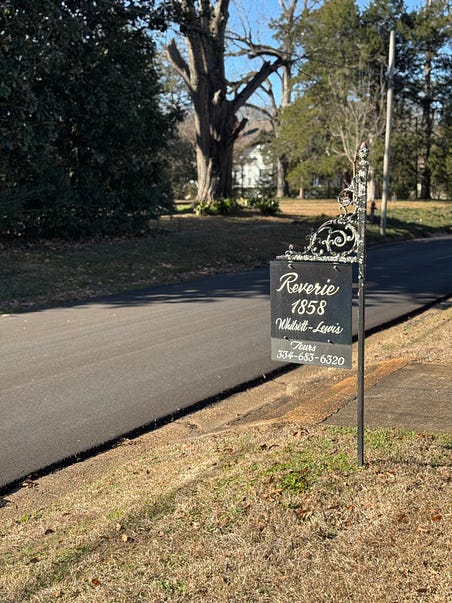
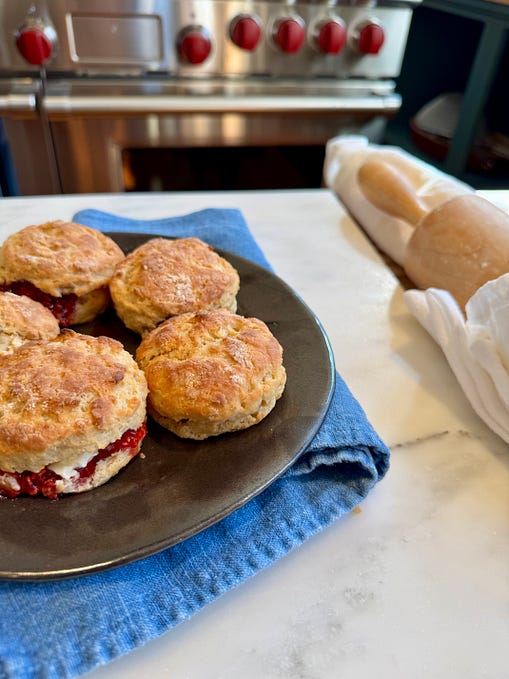
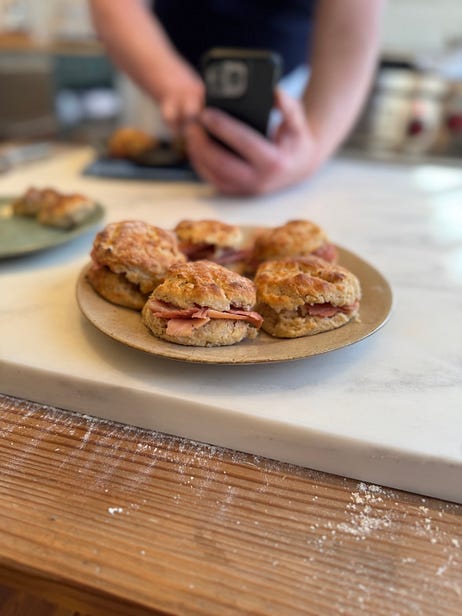
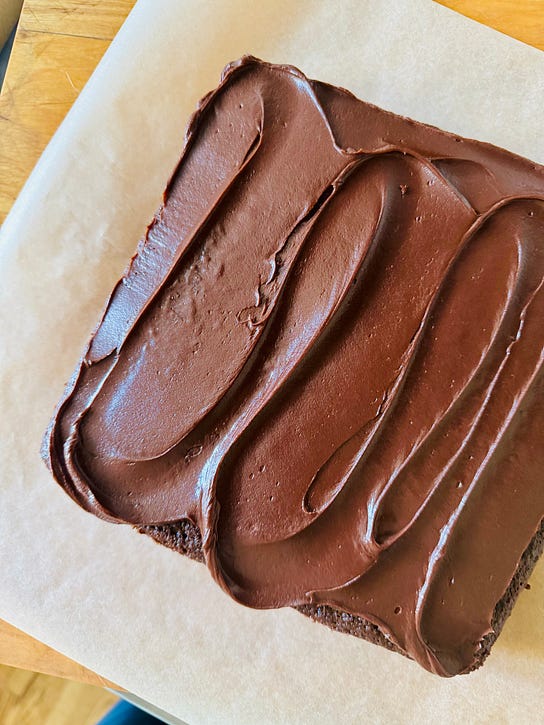
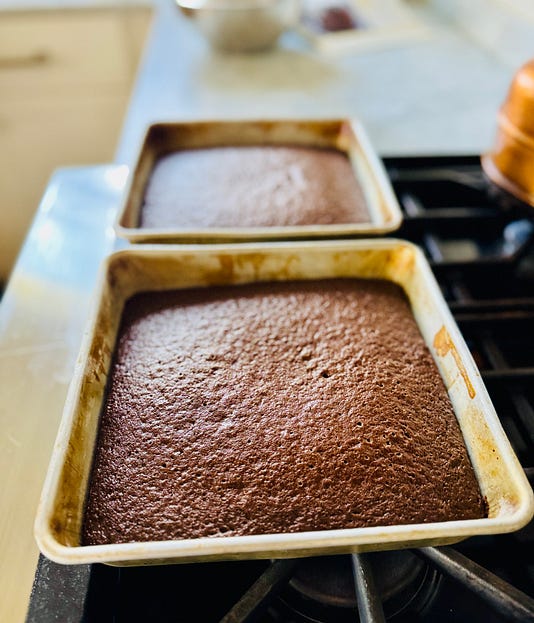
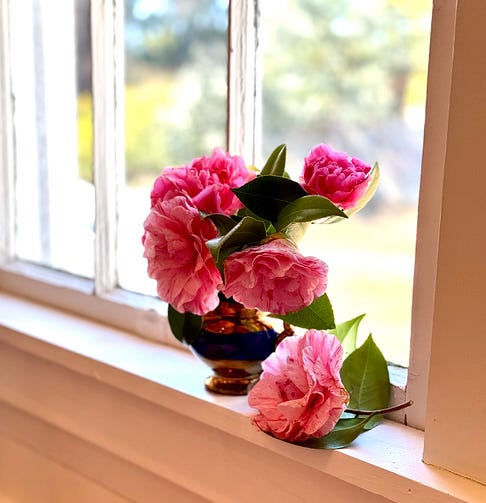
0 comments:
Post a Comment